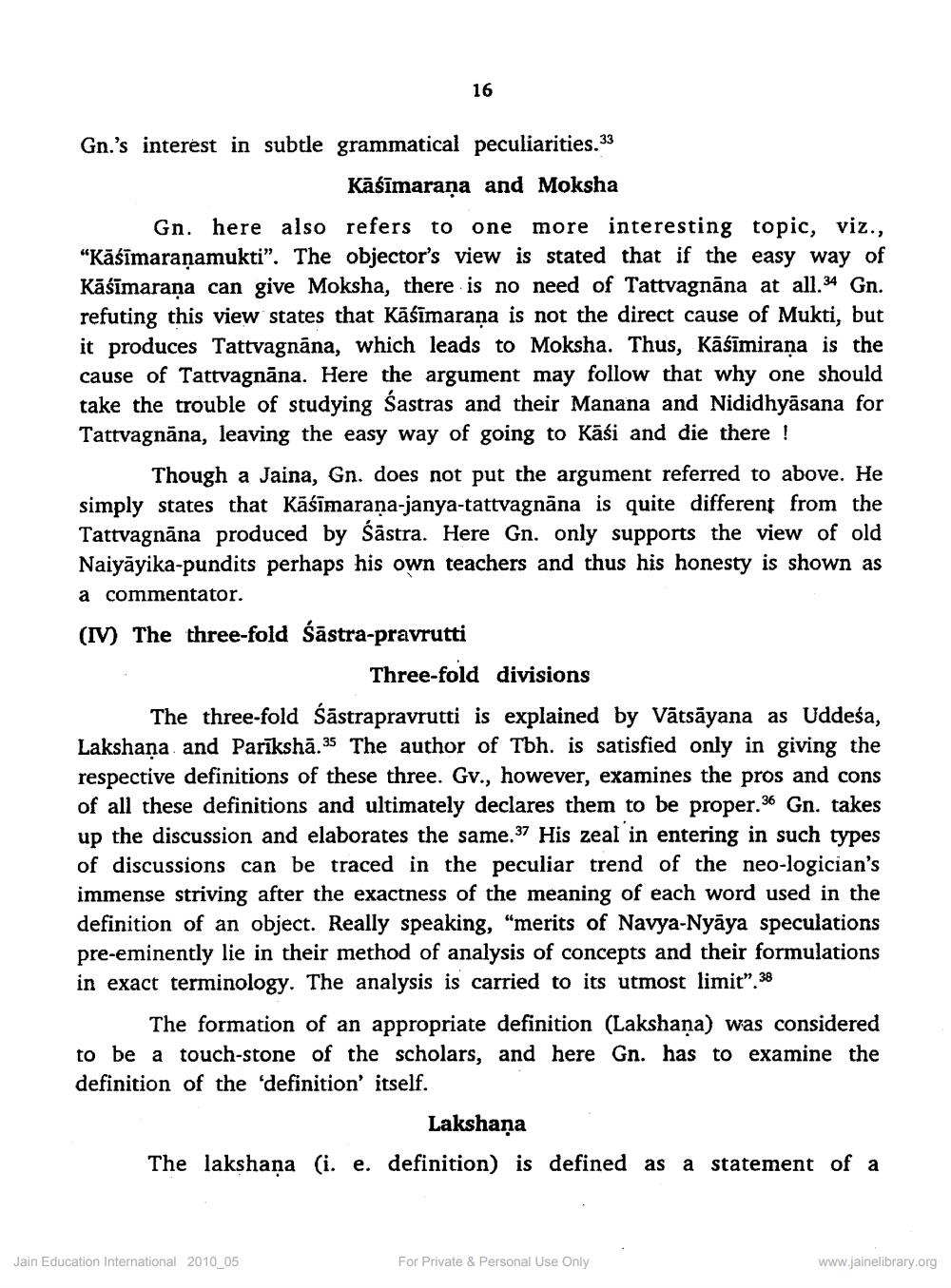________________
16
Gn.'s interest in subtle grammatical peculiarities.33
Kāśīmaraṇa and Moksha
Gn. here also refers to one more interesting topic, viz., "Kāśīmaraṇamukti". The objector's view is stated that if the easy way of Kāśīmaraṇa can give Moksha, there is no need of Tattvagnana at all.34 Gn. refuting this view states that Kāśīmaraṇa is not the direct cause of Mukti, but it produces Tattvagnana, which leads to Moksha. Thus, Kāśīmirana is the cause of Tattvagnana. Here the argument may follow that why one should take the trouble of studying Sastras and their Manana and Nididhyāsana for Tattvagnana, leaving the easy way of going to Kasi and die there!
Though a Jaina, Gn. does not put the argument referred to above. He simply states that Kāśīmaraṇa-janya-tattvagnana is quite different from the Tattvagnana produced by Sastra. Here Gn. only supports the view of old Naiyāyika-pundits perhaps his own teachers and thus his honesty is shown as
a commentator.
(IV) The three-fold Sastra-pravrutti
Three-fold divisions
The three-fold Śāstrapravrutti is explained by Vātsāyana as Uddeśa, Lakshana and Pariksha.35 The author of Tbh. is satisfied only in giving the respective definitions of these three. Gv., however, examines the pros and cons of all these definitions and ultimately declares them to be proper. Gn. takes up the discussion and elaborates the same.37 His zeal in entering in such types of discussions can be traced in the peculiar trend of the neo-logician's immense striving after the exactness of the meaning of each word used in the definition of an object. Really speaking, "merits of Navya-Nyāya speculations pre-eminently lie in their method of analysis of concepts and their formulations in exact terminology. The analysis is carried to its utmost limit". 38
The formation of an appropriate definition (Lakshana) was considered to be a touch-stone of the scholars, and here Gn. has to examine the definition of the 'definition' itself.
Lakshana
The lakshana (i. e. definition) is defined as a statement of a
Jain Education International 2010_05
For Private & Personal Use Only
www.jainelibrary.org




